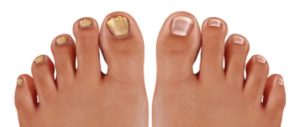Fungal infections are very common. They are considered one of the most contagious diseases that are easily transmitted from person to person. They are caused by disease-causing fungi that live almost everywhere: in the air, in water, in soil, in plants, and even in the human body. Fungal diseases are dangerous for people of all age groups.
Despite the large number of drugs today, the therapy of fungal infections has a number of significant problems. Firstly, the range of antifungal drugs on the world pharmaceutical market is represented only by products of synthetic origin, which have many contraindications for use, including individual intolerance and severe side effects, up to systemic disorders. Secondly, all these drugs have a rather low efficacy in relation to fungi, the strains of which, over time, have developed resistance to these drugs.
Therefore, there is a continual search for effective low-toxic herbal remedies, and essential oils are used, not least, in the treatment of many fungal infections. They are safe, antibacterial, anti-inflammatory, and antifungal. In this article, we will present you with a list of the most effective essential oils for treating fungal diseases.
Major fungal infections.
There is always a certain amount of fungi in the body, but they do not bother us at all until a certain point. They show their aggressive nature when certain conditions arise. The fungus is insidious in that it appears imperceptibly. Sometimes the carriers of the infection neglect the treatment themselves and allow the problem to manifest: women paint over damaged nails with varnish, and men just suffer itching and peeling.
The fungus is very tenacious, so the principle “it will pass by itself” does not work here. If one of the family members falls ill with a fungus, then the probability of infecting the rest of the relatives reaches 70%. Fungus spores remain on all objects that the patient has come into contact with: towels, floors, carpets, slippers, etc.
The most common fungal infections are:
 – epidermophytosis of the foot
– epidermophytosis of the foot
This condition is often referred to as “athlete’s foot”, as it often occurs in athletes who have to be in shoes for a long time. The fungus thrives in damp and warm environments, such as sweaty socks, wet pool floors. It often appears on people who wear tight shoes, do not use individual hygiene products in swimming pools, baths, saunas, showers. Infection occurs through contact with the patient or his shoes. The risk of getting infected depends on the individual’s susceptibility of the organism. The older the person, the higher the risk of infection. If a person has suffered mycosis, then the likelihood of recurrence is higher. And even people who are immune to mycosis can be carriers of it.
When a disease occurs, the physiological characteristics of the skin of the feet, increased sweating, changes in sweat chemistry, various endocrine deviations, and injuries of the lower extremities are of great importance. The disease does not appear immediately, pathogens can be inactive for a long time and are activated when suitable conditions arise (humidity, heat, etc.). The process most often begins between the toes, there is a slight itching and a strip of swollen, flaky epidermis appears. Then a crack appears with a small amount of serous fluid. As the disease progresses, it spreads to all interdigital folds and the sole of the foot. If left untreated, the fungus can spread to the back of the sole. This is not only unaesthetic, but it causes soreness, suppuration, difficulty walking and threatens the development of complications.
Athlete’s foot prophylaxis:
- Keep feet dry, change socks frequently, wipe the interdigital space after swimming or showering
- Wear shoes with normal ventilation and cotton socks
- If you have sweaty feet, use talcum powder or antifungal powder
- Compulsory wearing of flip-flops in public areas (shower, pool)
- Air shoes after wearing (at least 24 hours)
-onychomycosis or nail fungus
fungal infections of toenails are more common in countries with temperate and cold climates, where people wear warm, tight shoes, which create favorable conditions for the development of infection, as well as in tropical and subtropical countries where there is high humidity and high temperatures.
 Onychomycosis often occurs in middle-aged and elderly people, but sometimes it also occurs in children and adolescents. It is believed that the risk of developing onychomycosis increases with age, 2.5 times every 10 years and rising to 50% in the elderly. This leads to a decrease in the rate of renewal of the nail plates, violation of the nail bed, angiopathy.
Onychomycosis often occurs in middle-aged and elderly people, but sometimes it also occurs in children and adolescents. It is believed that the risk of developing onychomycosis increases with age, 2.5 times every 10 years and rising to 50% in the elderly. This leads to a decrease in the rate of renewal of the nail plates, violation of the nail bed, angiopathy.
The occupational risk group includes workers in mines, metallurgical production, as well as workers in baths, laundries, massage therapists, orthopedists, athletes, and military personnel. This is due to a variety of harmful factors of their work (dustiness, gas pollution, high temperature, humidity)
The predisposing factors for onychomycosis are: venous insufficiency, obesity, diabetes mellitus, immunodeficiency states, various foot deformities, long-term antibiotic treatment.
– inguinal dermatomycosis
It is a widespread fungal infection caused by a fungus known as shingles.  This type of fungus develops in moist and warm areas of the body, as a result of which its frequent locations are the genitals, inner thighs and buttocks. Infection occurs most often in hot weather or in warm and humid climates. Shingles appears as a red, itchy circle with a rash. It is contagious and is easily transmitted from person to person through objects and through direct contact.
This type of fungus develops in moist and warm areas of the body, as a result of which its frequent locations are the genitals, inner thighs and buttocks. Infection occurs most often in hot weather or in warm and humid climates. Shingles appears as a red, itchy circle with a rash. It is contagious and is easily transmitted from person to person through objects and through direct contact.
-cut ringworm
 there are 2 types of disease – trichophytosis and microsporia. Microsporia is transmitted from sick animals, and trichophytosis parasitizes only in the human body. Ringworm can be found on any part of the body. The disease is highly contagious. It most often occurs in children from 4 to 15 years old, but adults are also susceptible to this disease, especially those who deal with animals. A red circle appears at the site of infection, the skin becomes scaly, itchy and flakes.
there are 2 types of disease – trichophytosis and microsporia. Microsporia is transmitted from sick animals, and trichophytosis parasitizes only in the human body. Ringworm can be found on any part of the body. The disease is highly contagious. It most often occurs in children from 4 to 15 years old, but adults are also susceptible to this disease, especially those who deal with animals. A red circle appears at the site of infection, the skin becomes scaly, itchy and flakes.
Ringworm prevention:
Simple preventive measures must be followed:
- Do not use other people’s personal hygiene items (towels, combs, washcloths, etc.)
- After visiting public pools, water parks, you must immediately wash your swimsuit and take a shower with soap
- Wash the linen of the patient with ringworm separately and pre-soak in a disinfectant solution. Iron thoroughly after washing.
- Daily cleaning of the sick room with disinfectants
- Systematically examine children and explain to them why contact with stray animals is dangerous
-candidiasis
 Candidiasis, commonly referred to as “thrush”, occurs in more than 50% of the gynecologist’s patients and, according to statistics, the number of women who become ill is growing every year. Candida is a tiny microorganism that lives in the digestive tract and is very beneficial for digestion and enzyme synthesis. Its number is regulated by our immunity. But suddenly, for a number of reasons, its number increases dramatically and begins to parasitize, causing many problems. Causes may include: stress, unhealthy diet (eating fast carbohydrates, sugar, alcohol and caffeine), prolonged use of antibiotics, hormone pills, decreased digestive enzymes, chemotherapy, thyroid disease or other endocrine disorders, parasitic infections from raw foods, pregnancy, aging of the body.
Candidiasis, commonly referred to as “thrush”, occurs in more than 50% of the gynecologist’s patients and, according to statistics, the number of women who become ill is growing every year. Candida is a tiny microorganism that lives in the digestive tract and is very beneficial for digestion and enzyme synthesis. Its number is regulated by our immunity. But suddenly, for a number of reasons, its number increases dramatically and begins to parasitize, causing many problems. Causes may include: stress, unhealthy diet (eating fast carbohydrates, sugar, alcohol and caffeine), prolonged use of antibiotics, hormone pills, decreased digestive enzymes, chemotherapy, thyroid disease or other endocrine disorders, parasitic infections from raw foods, pregnancy, aging of the body.
Symptoms: white or colorless discharge with a characteristic odor, itching and burning in the vagina, pain when urinating. There may also be digestive problems, bad breath, depression, or irritability.
Candidiasis prevention:
- Proper nutrition. Avoid foods that are a breeding ground for the fungus (starch, sugar, fast carbohydrates). Eat more vegetables, yoghurts with natural probiotics.
- Walking or exercising more often will help oxygenate your body.
- Do not use perfumed sanitary towels.
There are many medicines available to treat fungal infections. They are effective, but they have a significant disadvantage – there are a lot of contraindications and side effects, they are far from safe for the body and cause resistance to infection, which forces us to select a new treatment every time.
Not surprisingly, there is an ongoing search for a safer yet effective treatment for fungal infections. And essential oils are a much safer choice for this. The antifungal properties of certain oils have been well studied, and research has shown that certain essential oils act as powerful antifungal agents. These oils have a complex chemical composition, the components of which are effective in treating fungi and yeast. Most importantly, essential oils are produced by nature. They are not addictive, unlike synthetic drugs.
What essential oils are most helpful in fighting fungal infections?
 Clove essential oil
Clove essential oil
Clove has tremendous healing potential! Clove oil – a nightmare of a fungal infection! It is one of the best oils for use against fungi. As shown in a 2009 study, it can help against 15 types of fungi. The main component of the oil, eugenol, was identified and its antifungal activity was analyzed. Clove essential oil and eugenol alone have shown tremendous efficacy against all strains tested, including those resistant to the most commonly used antifungal drugs.
Clove essential oil also has analgesic, antiviral, antioxidant and antibacterial properties. After the first application of this oil, itching, burning, peeling disappears. It also heals wounds well.
Application: Before use, clove essential oil should be diluted with a base oil. The ideal base oils are black seed oil, pumpkin seed oil and jojoba oil, as they also have antifungal properties and will enhance the effects. Moisten a cotton swab with oil and fix on the sore spot overnight. In the morning, the compress should be replaced with a new one. Course – until complete recovery.
 Lavender essential oil
Lavender essential oil
Research has shown that lavender oil is fatal to many strains of fungi, including those that cause candidiasis and ringworm. The compounds contained in lavender oil destroy the cell membrane of fungi, thereby causing their death. Iranian researchers have compared this oil to a well-known antifungal drug for its effects on vaginal candidiasis. Research has shown that lavender oil is more effective and should be used to treat fungal infections.
Application: When treating vaginal candidiasis, mix lavender oil with base oil (1 ml of black cumin oil, 4 ml of pumpkin seed oil and 3 drops of lavender oil). Soak a tampon in this mixture and insert into the vagina. It is better to carry out this procedure at night. During pregnancy, you cannot use tampons at night, but you can douche or use tampons during the day, no more than one hour.
You can also do sitz baths with essential oils from time to time.
 Tea tree essential oil
Tea tree essential oil
No essential oil beats tea tree oil! It contains more than 40 components that destroy bacteria and viruses.
This oil is useful for treating many fungal infections. It is harmful to nail fungus. It helps to suppress the growth of dermatophytosis, trichophytosis and some types of candidiasis. Tea tree oil is also effective for dandruff and seborrheic dermatitis.
Regular application of this oil can completely eliminate the disease.
Application: Use oil only mixed with a base oil. In its pure form, it can cause an allergic reaction that can aggravate the skin condition. Apply diluted oil to a napkin, apply to the affected nail and secure with a plaster (first wash your feet with soap and cut your nails short). Do this compress every morning after waking up and in the evening before bedtime. Course – until complete recovery. Do not apply this oil internally!
 Lemongrass essential oil
Lemongrass essential oil
This essential oil can be used to treat many ailments, including fungal infections. Lemongrass oil destroys the cell membrane of fungi, thereby contributing to their death. It is especially effective against the fungus that causes ringworm and onychomycosis. As a result of research, it was revealed that the main components of this oil (geraniol and nerol) are extremely active against 15 strains of fungi, including eight pathogenic Candida.
Application: Although lemongrass oil is considered safe to use, it should be diluted with a base oil before use. This can be black cumin oil, jojoba oil, pumpkin seed oil, as these natural oils also exhibit antifungal activity. Moisten a cotton swab with oil and fix it on the sore spot overnight. Change the compress to a new one in the morning. Course – until final recovery.
 Cinnamon essential oil
Cinnamon essential oil
It is a proven remedy for fungal nail diseases. Cinnamon is known to regulate blood sugar, and sugar is a food source for bacteria. It is helpful to take cinnamon orally daily as a tea and apply cinnamon essential oil to the affected nails. Cinnamon even kills antibiotic-resistant fungi and helps to repair the nail. This oil is effective in treating many other fungal diseases, including staphylococcus strains.
Application: cut the damaged nail as short as possible, and soak it in a nail-bath, then rub cinnamon oil into it with a cotton swab. Cinnamon oil should be diluted with a base oil and only a small amount is sufficient.
The oils above are not a definitive list of oils that can help treat fungal infections. Research in this area continues and, perhaps, new oils, even more effective, will soon appear.
Remember that fungus lives everywhere. It can live and reproduce in your bathroom and washing machine. It loves moisture and warmth. If you follow the rules outlined above, then the fungus will not disturb you. And if, nevertheless, such a problem arises, then our advice will be of great help to you.
Attention! The quality of the essential oil is very important. Therefore, it is imperative to buy natural essential oils. Only they have all the medicinal properties and are suitable for the treatment of fungal infections.
